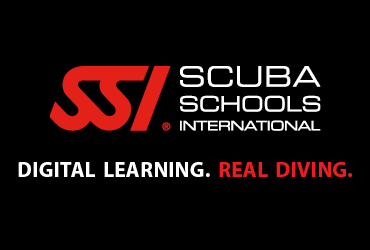During your Deep Diver training course, you learnt about the equipment and gained the skills and knowledge required to safely plan and conduct recreational, no-decompression, deep dives.
Your deep diver training gave you access to a diverse new range of dive sites, that were previously out of your reach, including deeper underwater canyons, archways and towers plus artificial features like wrecks.
The limiting factor was no decompression diving, you simply followed the non-deco tables and enjoyed your deep dives.
Over time your air consumption decreased and you decided to take the Nitrox course to extend your bottom time, quite often there were areas you could have stayed longer but were still held back with the non-deco element.
Using Nitrox gas blends can increase your allowable bottom time, so long as you don’t exceed the maximum operating depth for the gas- But even the best nitrox mix, has relatively short bottom times for deeper dives.
This is hardly enough time to gain experience at depth, nor enough time to fully experience- the new underwater environment.
If you want to safely increase your bottom time, you must expand your training!
As global travel becomes more affordable and accessible, access to once-remote dive sites that exceed the limits of recreational diving, are now easier to access.
The expanded limits of decompression diving greatly benefit visitors of many historical or archaeological dive sites, which are located at depths below 30 metres.
Micronesias' Truk Lagoon, is a perfect example of one of these sites. Many of the wrecks in Truk are found between 20 and 40 metres. Even though these sites are accessible to qualified recreational divers, they are often very large.
Many wrecks are more than 120 metres in length.
Safely exploring the entirety of these wrecks, both inside and out is nearly impossible without exceeding the non-deco limits.
One of the tenets of Pro-Dive and SSI's training is to never exceed the limits of your training or experience.
After earning your certification, you will be trained to plan dives using;
A single decompression gas
Maximum of EAN 40 during training
Up to 15 minutes of decompression
To a depth of 40 metres
With an equally or more qualified dive buddy.
This training uses the same fundamental concepts as XR programs, which means that everything you learn in the Decompression Diving program is applicable if you choose to continue extending your range.
Prerequisites
Minimum age: 16 years old.
24 total dives
Have the following certifications or an equivalent:
Deep Diving
Enriched Air Nitrox 40
Students using a side mount configuration- must be certified as Recreational Side mount Diving
NOTE: Pro-Dive recommends students earn the Science of Diving certification, prior to beginning this program.
Minimum Equipment
Students participating in this program must use at least one of the following equipment configurations:
A complete recreational Total Diving System as outlined in the Recreational Scuba General Training Standards with appropriate D-rings for stage cylinder attachment.
A complete Sidemount Total Diving System.
Including:
A single-stage cylinder (minimum volume 5.7 litres) with a delivery system and submersible pressure gauge.
Depth Limitations
Maximum confined water depth limit: 12 metres.
Maximum depth limit for Open Water Training Dives 1 through 3: 40 metres.
At least one dive must be to a depth of at least 30 meters.
Requirements For Completion
Complete all academic sessions and assessments
Complete the final exam.
Independently create a full dive plan using dive planning software.
Complete one confined water session
Complete three open-water training dives
Notes
Open Water Training Dive 1 must be planned within the no-decompression limits of the student’s dive computer or dive planning software.
Actual staged decompression training must be conducted on Open Water Training Dives 2 and 3.
The total time for all required decompression stops on the back gas profile must not exceed 15 minutes per dive.
Divers may carry a decompression mixture of up to 40% oxygen.
Sequence
Day One: Theory 1 plus Equipment Configuration workshop
Day Two: Confined Water Session
Day Three: Open Water Training Dive 1 plus Exam
Day Four: Open Water Training Dives 2 and 3
Certification
Upon completion of all academic and in-water requirements;
Certified divers can dive with an equally- or more-qualified buddy in environments equivalent to their training and within the recommended depth limits of their certifications.




